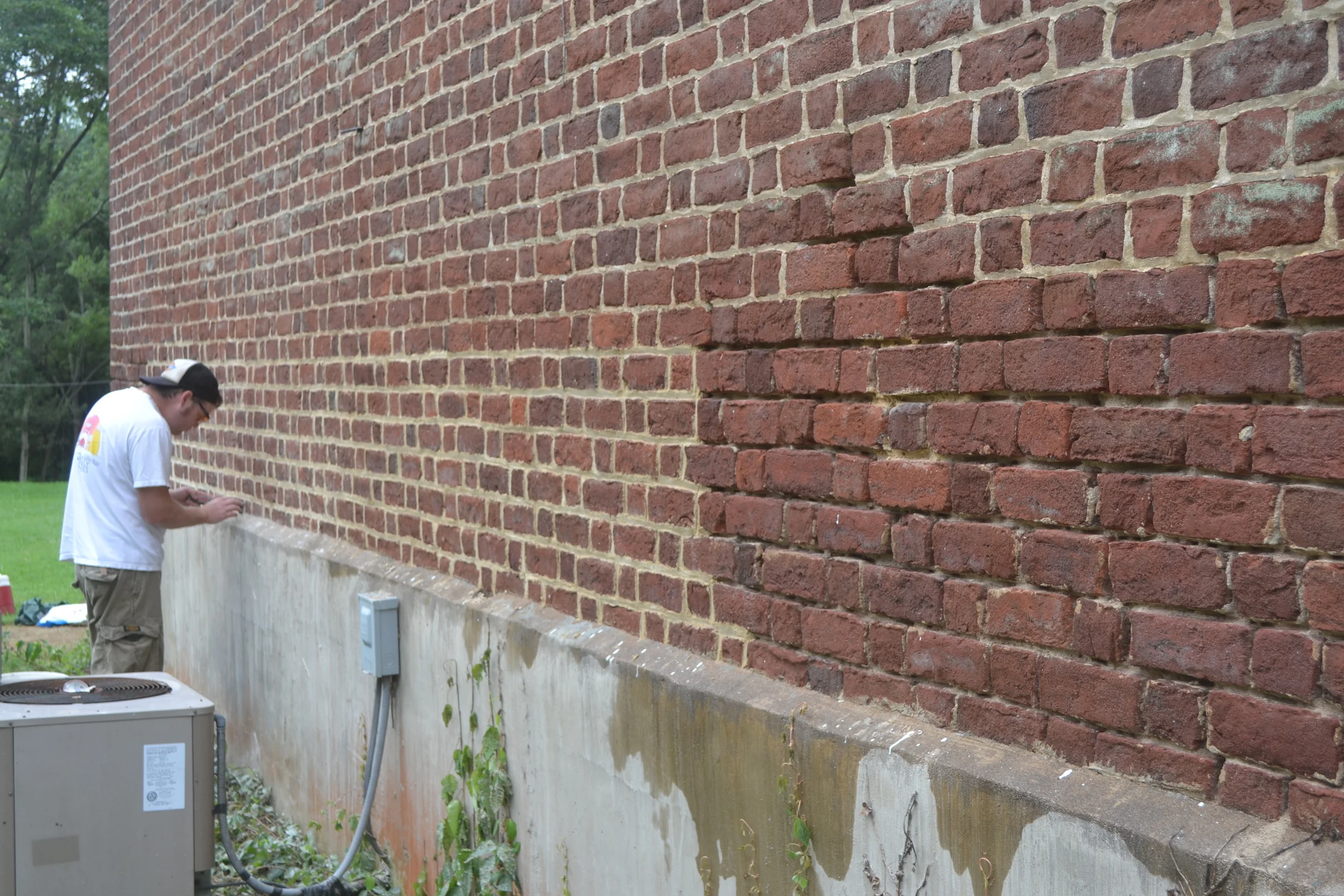

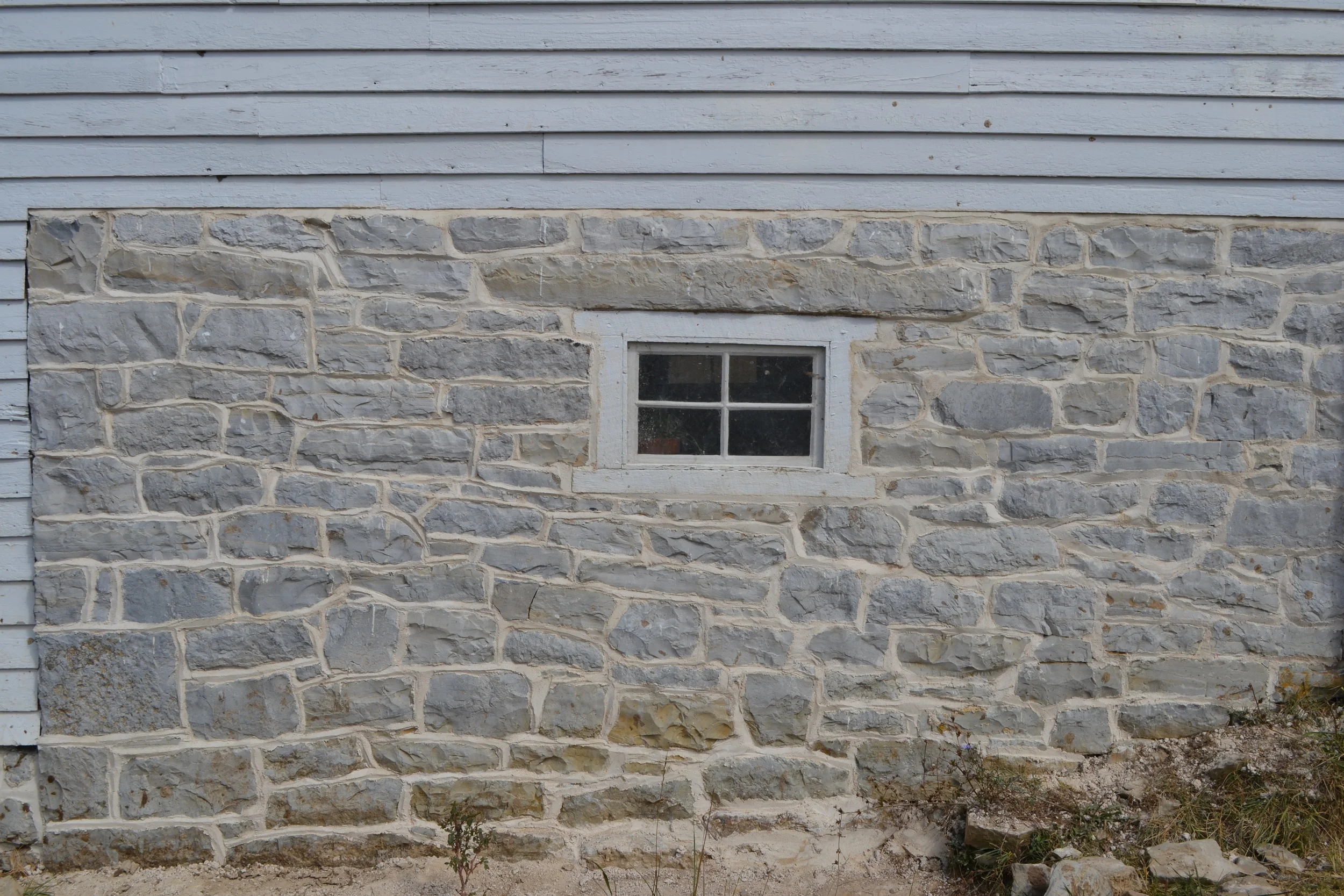
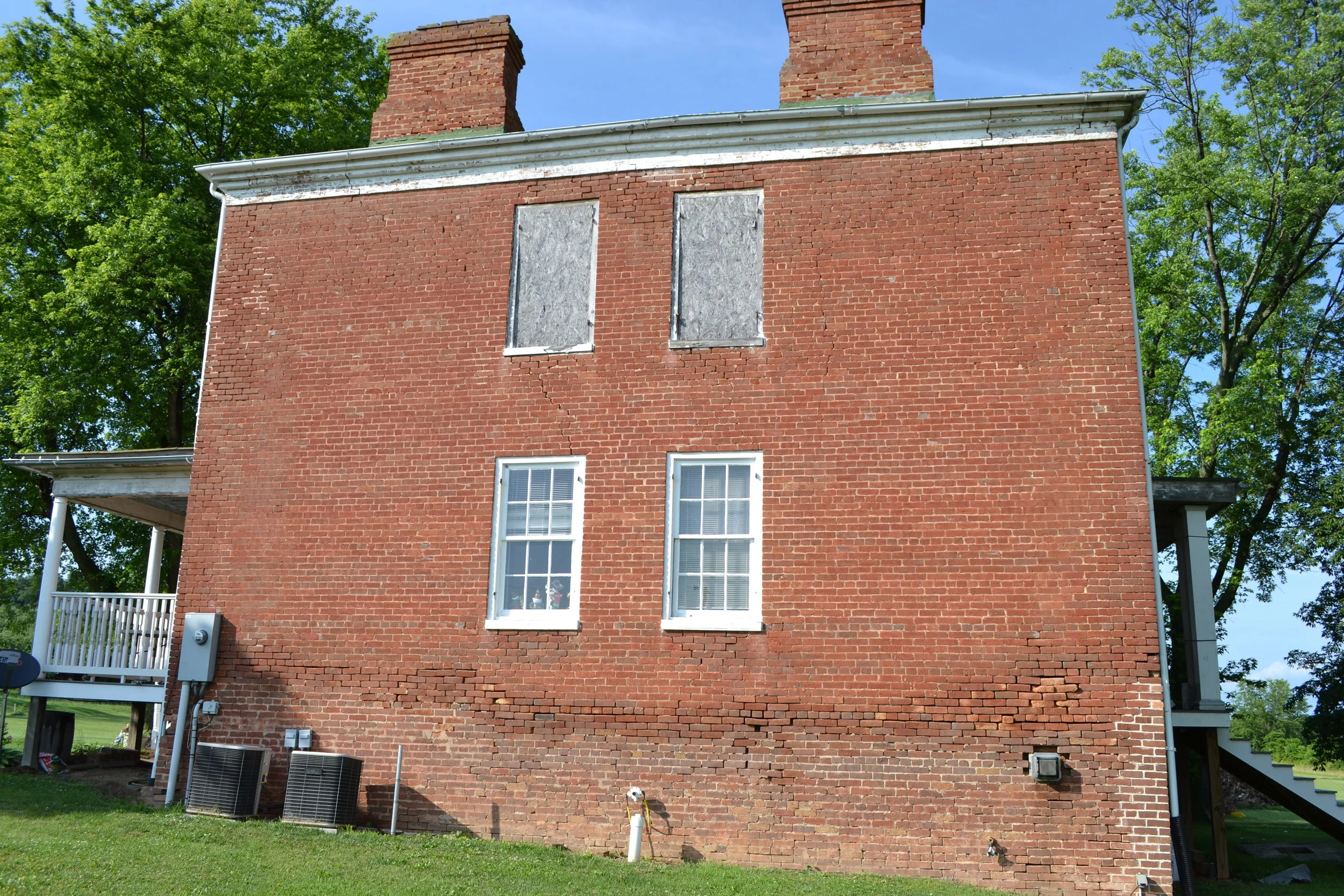


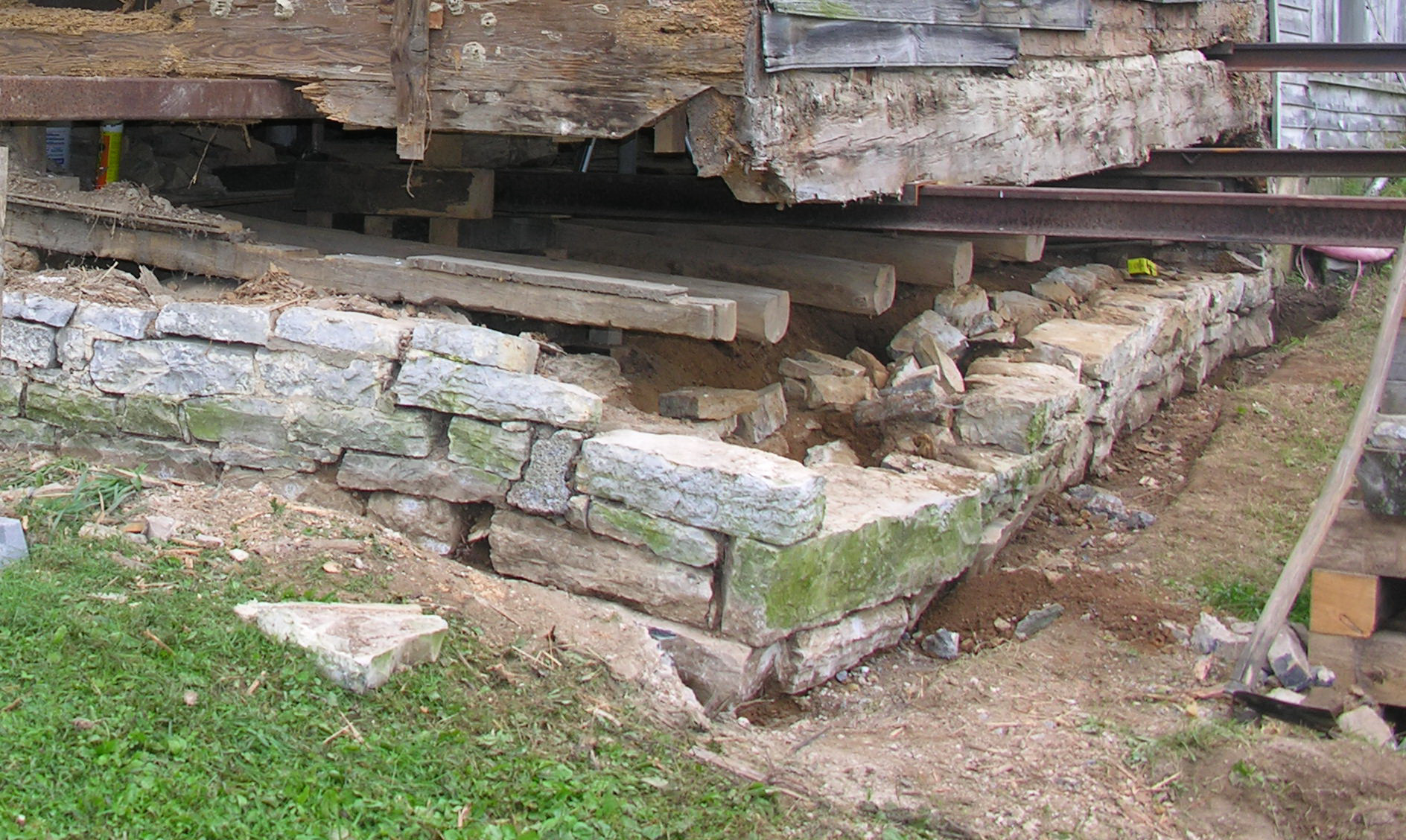





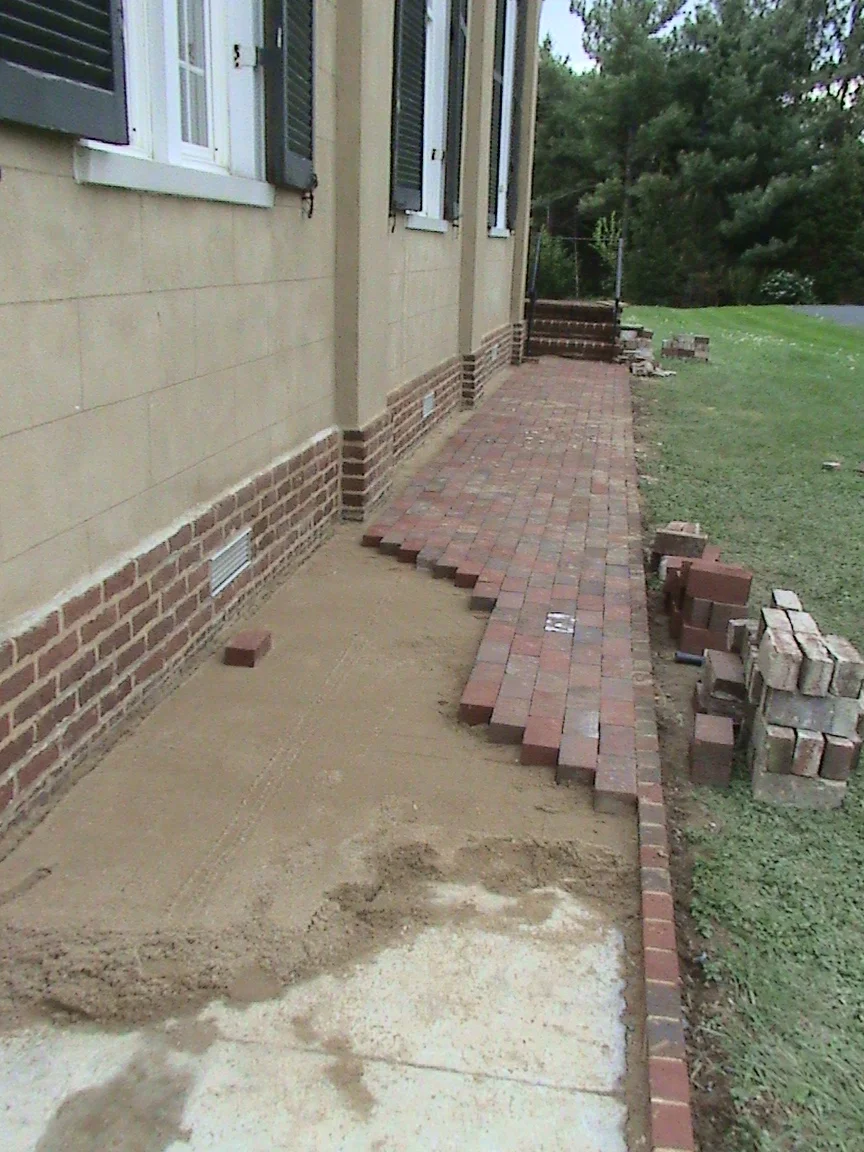
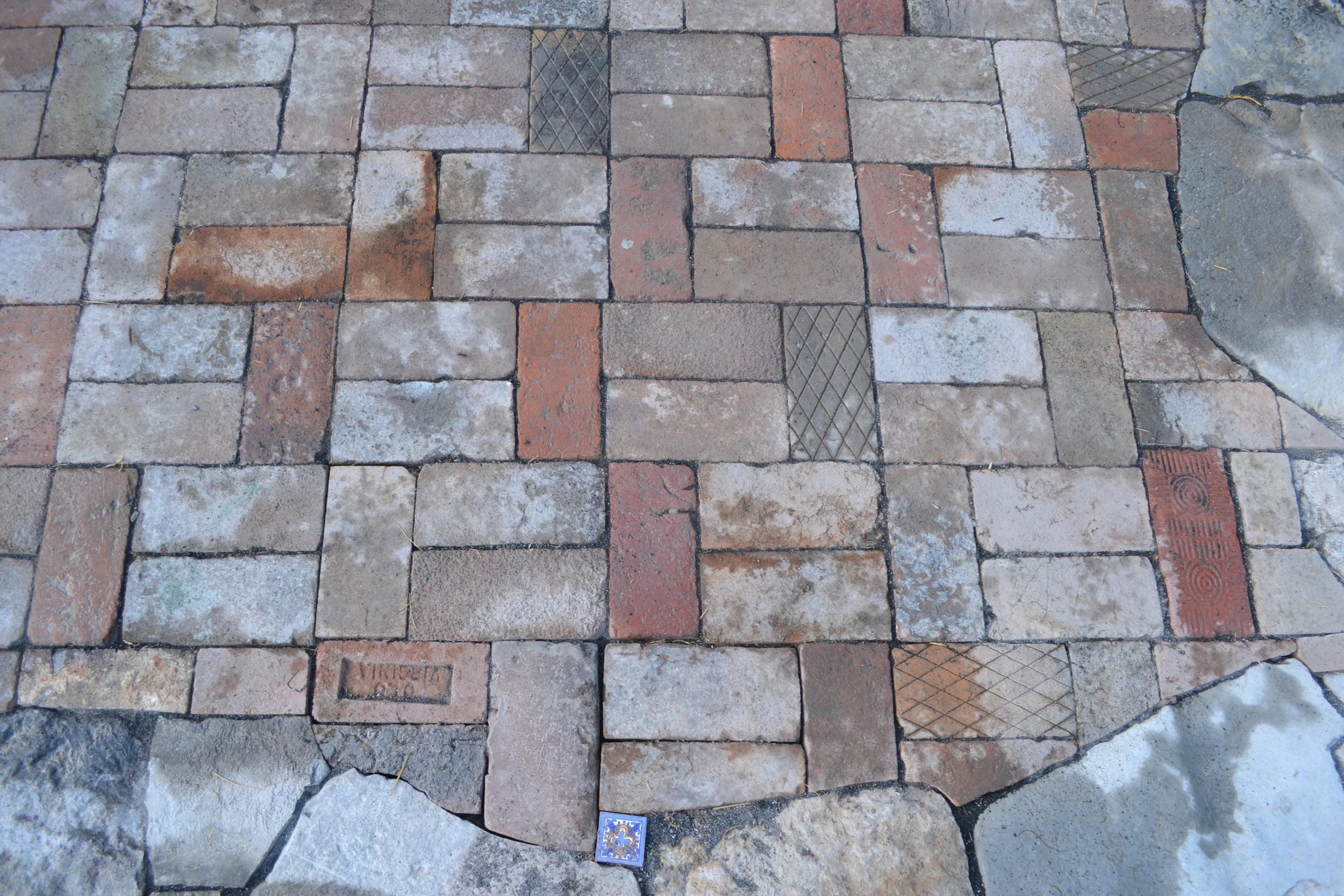
Your Custom Text Here
Historic masonry requires specialized care that differs greatly from modern masonry practice. The wrong mortar can ruin otherwise fine brick or stone work. Shenandoah Restorations has experience with traditional masonry materials and can match the appropriate mortar to blend seamlessly into your existing brick or stone work. We can also repair or rebuild any damaged masonry.
The correct mortar is especially important when working with antique handmade bricks. Traditional brick walls are designed to breathe through the mortar joint. Modern portland-based mortars are too hard for soft wood-fired bricks, forcing moisture into the bricks themselves. Without a flexible mortar, absorbed moisture will cause the bricks to expand and crack. Moisture will also dissolve sulfites inside the brick, which can crystallize into efflorescence, causing the faces of the bricks to spall.
Historic masonry requires specialized care that differs greatly from modern masonry practice. The wrong mortar can ruin otherwise fine brick or stone work. Shenandoah Restorations has experience with traditional masonry materials and can match the appropriate mortar to blend seamlessly into your existing brick or stone work. We can also repair or rebuild any damaged masonry.
The correct mortar is especially important when working with antique handmade bricks. Traditional brick walls are designed to breathe through the mortar joint. Modern portland-based mortars are too hard for soft wood-fired bricks, forcing moisture into the bricks themselves. Without a flexible mortar, absorbed moisture will cause the bricks to expand and crack. Moisture will also dissolve sulfites inside the brick, which can crystallize into efflorescence, causing the faces of the bricks to spall.
Three Chimneys - c 1750, Nellysford,Va
Loose mortar has been carefully chiseled away and a color matched hydraulic lime mortar is tooled into the joint.
Painter Springhouse - Shenandoah Co., Virginia
This eighteenth century springhouse has almost no mortar left between the rocks. Old stone walls were often built to stand without mortar but the mortar is necessary to keep out weather, vermin and water that can cause failure in the long run.
Painter Springhouse
The proper mortar joint for this work is a protruding v-shaped joint that prevents water infiltration.
Widzga House 1850 - Moores Store, Va
The wrong mortar combined with moisture from the basement caused the mortar to fail along the basement ceiling level. Non-breathable portland-based mortar was used below this line.
Widzga House
Unlike stone masonry, brick construction depends on mortar for its structural integrity. Not much chiseling was involved here, however below this area, the portland mortar removal can be labor-intensive.
Corner failure
Several withes of brick had all but fallen out of this corner. Fortunately, it was laid 4 withes thick.
Samuel Myers House - 1760, Forestville, Va
The foundation wall of the 1803 addition to this house had collapsed.
Samuel Meyers House - after
The foundation stones were labeled and removed. A concrete footer was poured below grade and the stones were then relaid exactly as they were originally and reinforced from behind with a concrete wall.
Foundation in need of Repointing
Fortunately this wall is still in good shape.
Foundation after
A few remnants of the old mortar allowed us to match the mortar color.
Portland Cement mortar
Not only is this an example of a sloppy job, but the mortar is too hard for the material and traps moisture inside the foundation. This is a feature commonly found on stonework we encounter.
Pennybacker House
A decorative built up joint was used here to match an early twentieth century technique used in a retaining wall. Two color matched mortars and a custom made pointing tool were used to achieve this profile.
St. Thomas Chapel - 1834, Middletown, Va
Bricks were recycled and cleaned from an earlier walkway to create one that will last a lifetime.
Patio
A combination of interesting antique pavers and limestone were used here to create a unique patio.